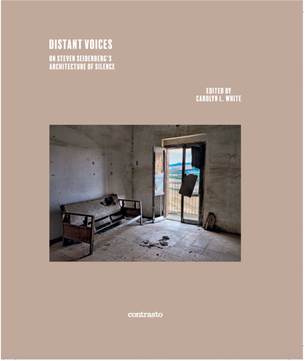Photography books
Between 1952 and 1972, the Italian government implemented a land reform policy in a few key agrarian centers of the countryside, known as the Riforma Fondiaria. Funded by the Marshall Plan, the program placed land in the possession of impoverished families, but did so without the infrastructure necessary to make the small holdings sustainable. This failure brought about a mass migration into the developing industrial North, leaving dozens upon dozens of post-war, often cast-concrete structures abandoned in the now machine cultivated fields.
In 2017, photographer Steven Seidenberg began exploring the landscapes, material culture, and remaining structures of this failed program in the vast agricultural areas of Basilicata and Puglia. The resultant series of images, collected for the first time in this volume, is not simply documentary, but presents the imperiled remnants of these absent lives in the form of hauntingly beautiful, painterly compositions. Again and again, these photographs reveal a poetic fragility that compels a primordial empathy in the viewer, drawing our attention to the lives destroyed through the Riforma, and thereby evoking the elemental complexity of loss and its aftermath the world over.
The accompanying volume--Distant Voices: On Steven Seidenberg’s Architecture of Silence—brings together essays by art historians, critics, curators, architects, philosophers, anthropologists, and archaeologists contextualizing the images and exploring the power and reach of the photographs.
In 2017, photographer Steven Seidenberg began exploring the landscapes, material culture, and remaining structures of this failed program in the vast agricultural areas of Basilicata and Puglia. The resultant series of images, collected for the first time in this volume, is not simply documentary, but presents the imperiled remnants of these absent lives in the form of hauntingly beautiful, painterly compositions. Again and again, these photographs reveal a poetic fragility that compels a primordial empathy in the viewer, drawing our attention to the lives destroyed through the Riforma, and thereby evoking the elemental complexity of loss and its aftermath the world over.
The accompanying volume--Distant Voices: On Steven Seidenberg’s Architecture of Silence—brings together essays by art historians, critics, curators, architects, philosophers, anthropologists, and archaeologists contextualizing the images and exploring the power and reach of the photographs.


